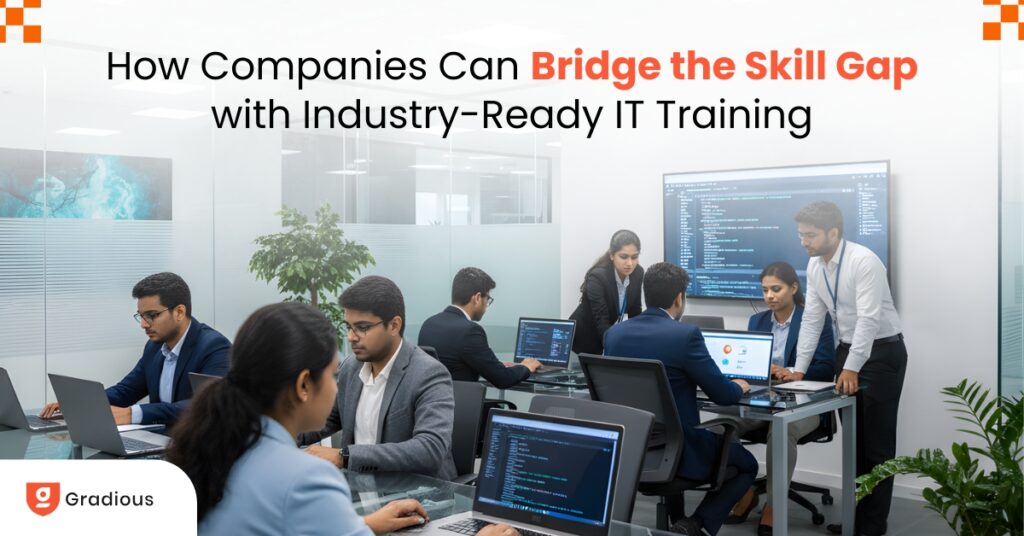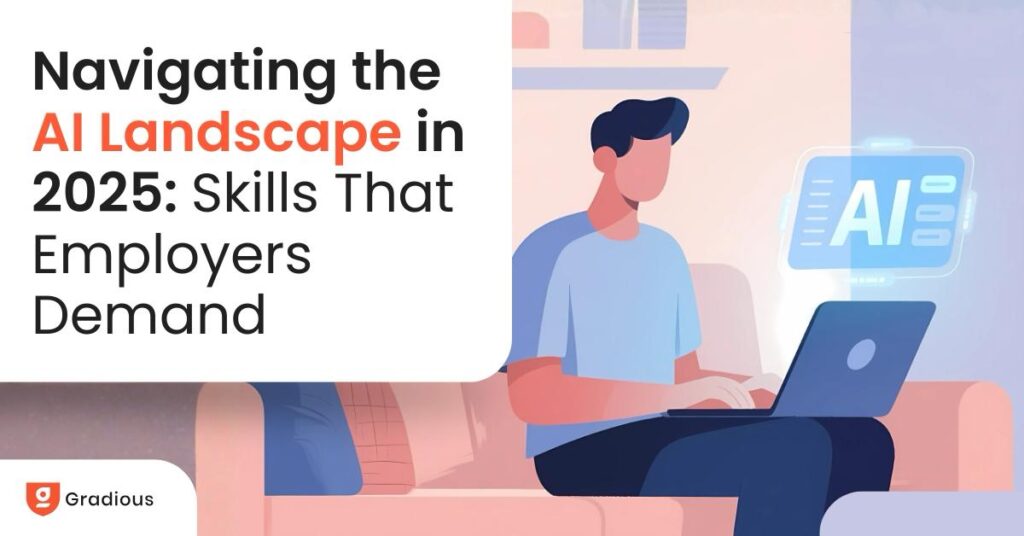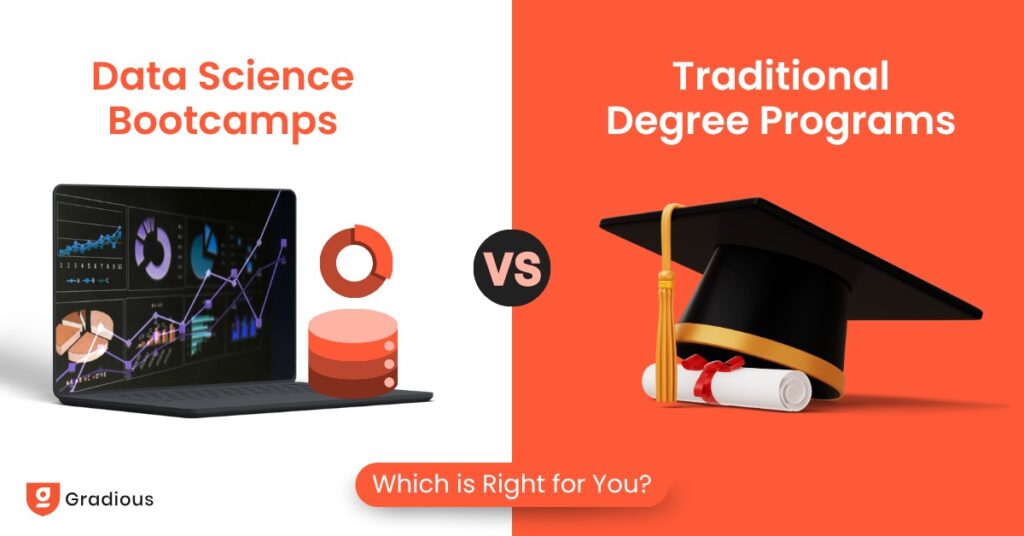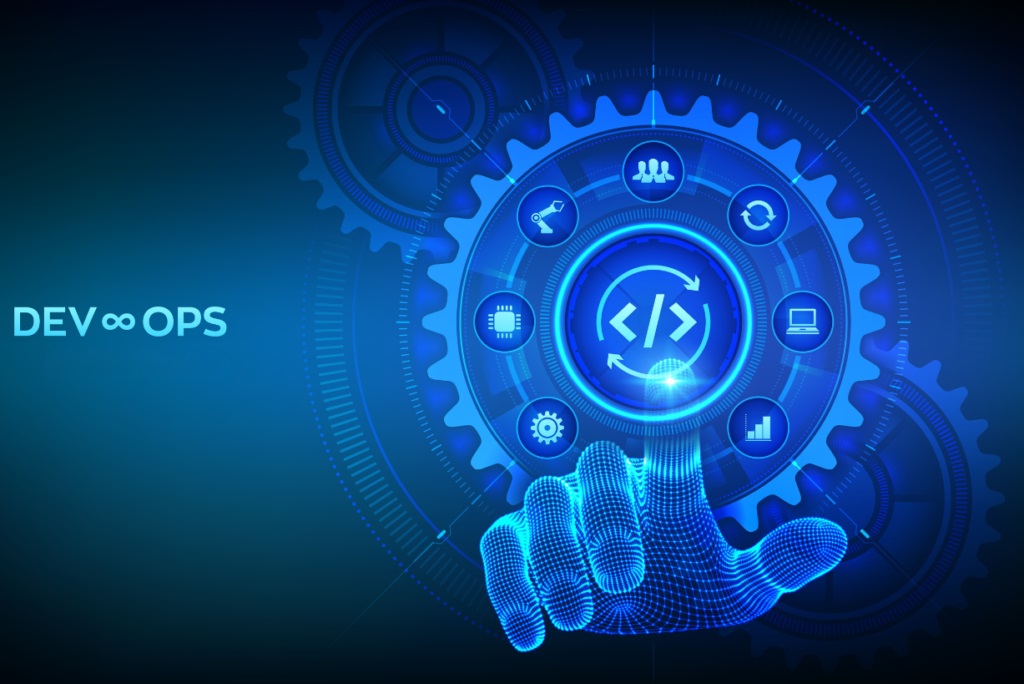Upskilling vs Hiring: Today’s IT companies face a new kind of pressure not from competition, but from capability gaps within their workforce. As AI, Cloud, and DevOps become core to every project, the widening skills gap directly impacts delivery timelines, innovation, and client satisfaction.
For IT leaders, the question often boils down to upskilling vs hiring. Should they onboard new talent at a premium cost, or invest in developing their existing workforce who already understand their systems, clients, and culture through industry-ready training programs
Hiring may offer quick availability, but true productivity often takes time and comes with higher turnover. Upskilling, on the other hand, accelerates workforce effectiveness, boosts retention, and builds lasting technical depth within teams.With structured, data-driven learning powered by platforms like Gradious Leap LMS, IT leaders can transform their existing workforce into highly skilled, project-ready teams — improving productivity and retention at scale.
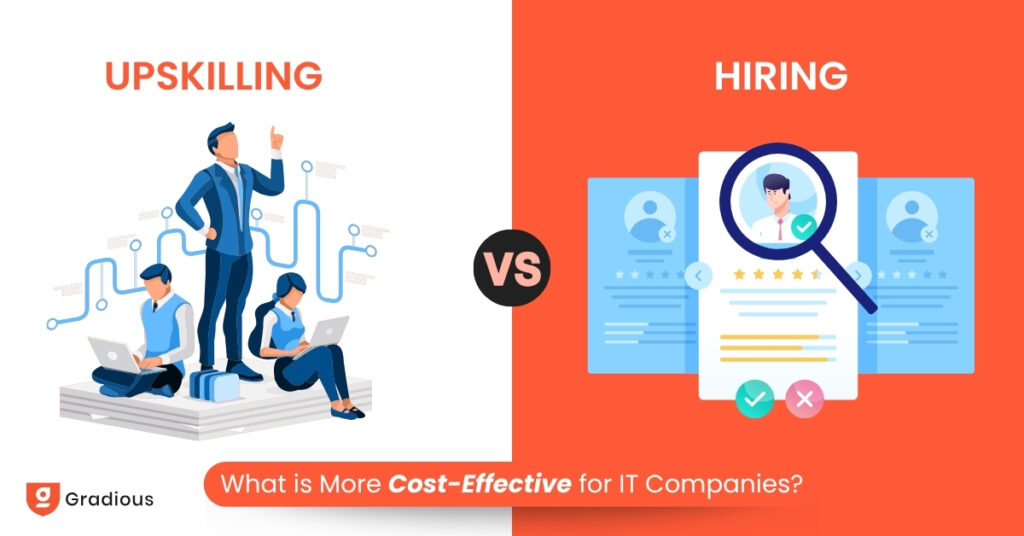
Upskilling vs Hiring in the IT Industry: What is the Key Difference?
When IT leaders aim to scale or adopt emerging technologies, the default reaction is often to hire. But as project complexity and deadlines tighten, many are realizing that hiring alone can’t sustain competitiveness. Understanding the trade-offs between upskilling and hiring is key to making strategic decisions.
What Does Hiring Mean for IT Companies?
Hiring has long been the go-to method to fill skill gaps. On paper, it seems straightforward — recruit, onboard, and deploy. In reality, new hires often take three to six months to become fully productive, accumulating hidden costs such as recruiter fees, onboarding time, and team ramp-up efforts.
Attrition risk worsens the challenge. If new hires leave within a year due to mismatched expectations, ROI drops significantly.
For example, a mid-sized IT firm expanding its DevOps team may hire external engineers, but six months later, half the team is still adapting to internal processes. The result: capacity increases, but capability lags.
Hiring solves immediate shortages but rarely builds sustainable technical depth.
What Is Upskilling and Why Is It Becoming a Priority?
Upskilling takes a proactive approach — developing existing employees who already align with company systems and culture. Through structured training, organizations can tie learning outcomes directly to project needs.
The benefits are clear:
- Faster impact: Employees apply new skills immediately in familiar environments.
- Deeper expertise: Teams gain enduring technical capability.
- Higher retention: Investment in people drives engagement and loyalty.
Key Reasons Why Upskilling Has Become a Priority in the IT Industry
- Technology evolves faster than hiring. By the time new hires settle, tools may have changed.
- Talent shortages persist. Over 70% of IT leaders struggle to find professionals in AI, DevOps, and cybersecurity.
- Upskilling is cost-efficient. Training existing staff costs far less than hiring externally — often 4–6x less.
- Retention is stronger. Learning investment enhances loyalty and reduces attrition.
- Agility builds competitiveness. A learning workforce adapts faster to evolving client needs.
Gradious Leap LMS strengthens this process by tracking every learner’s journey — from assignment completion and grading to automated evaluation, proctored assessments, and AI-driven interviews. This ensures every learner grows at the right pace while leaders gain real-time visibility into team readiness.
The IT Reality: Why Hiring Costs More Than Upskilling
Although hiring might seem like a quick solution in the upskilling vs hiring debate, its hidden costs often outweigh its benefits. Upskilling, on the other hand, compounds internal expertise with measurable ROI through corporate IT training solutions.
The Hidden Costs of Hiring vs Upskilling the Workforce
Hiring:
Beyond salaries, organizations absorb recruiter fees, interview cycles, background checks, onboarding, and ramp-up time. Replacing an IT expert can cost 4–6x their annual salary, not including project delays or team disruptions.
Upskilling:
Training existing employees is significantly cheaper and faster. With Gradious Leap, organizations can automate performance tracking, run periodic assessments, and measure progress across cohorts — ensuring skill readiness aligns with project goals.
Internal learning initiatives can improve productivity by 25–40% and reduce attrition by up to 50%, making upskilling a high-return strategy for IT organizations.
Why Upskilling Outperforms Hiring for Long-Term Business Growth
Upskilling is no longer just a training initiative; it’s a strategic driver of business growth. As technology evolves, companies with continuous learning cultures stay more agile, competitive, and future-ready.
Developing a Continuous Learning Culture
A continuous learning culture encourages curiosity and adaptability. Employees who are regularly upskilled can transition smoothly to new technologies or frameworks — boosting both innovation and delivery speed.
Benefits include:
- Improved retention and loyalty through visible career growth.
- Higher productivity and faster delivery as employees adapt quickly.
- Greater engagement and motivation driven by skill-based career paths.
Gradious Leap LMS supports this by enabling:
- Automated assignment evaluation and grading
- AI-based interviews and mock tests
- Unique, role-specific assignments and feedback loops
Together, they ensure learning outcomes are consistent, measurable, and business-aligned.
Data Insights – ROI Comparison of Upskilling vs Hiring in IT Companies
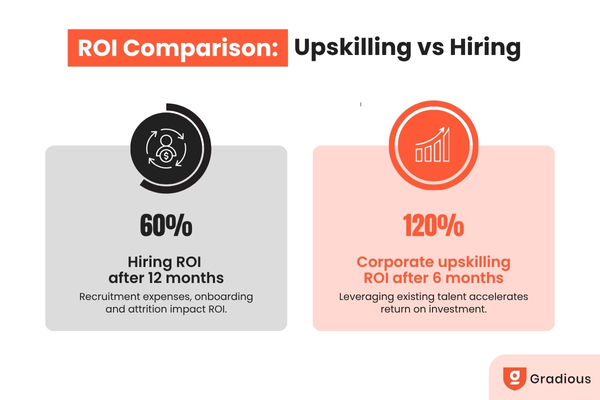
When it comes to ROI, the numbers speak clearly.
- Hiring: typically delivers around 60% ROI in 12 months due to recruitment and onboarding costs.
- Upskilling: can achieve up to 120% ROI within six months, leveraging existing knowledge and minimizing downtime.
Using Gradious Leap’s analytics dashboard, companies can track skill improvement, performance insights, and project readiness in real time — converting learning data into actionable business intelligence.
When to Choose Hiring Over Upskilling
While upskilling offers long-term value, strategic hiring remains essential in certain cases — such as adopting emerging technologies like AI Agents, Quantum Computing, or Edge Analytics, or when internal teams are at full capacity.
Most IT leaders today adopt a hybrid strategy — leveraging Gradious-led upskilling to strengthen core teams while hiring selectively for niche roles. This balance ensures agility, cost optimization, and sustainable competence.
How Gradious Helps Enterprises Balance Upskilling vs Hiring
At Gradious, we help IT enterprises close skill gaps and drive measurable business results through customized, scalable training powered by Gradious Leap LMS.
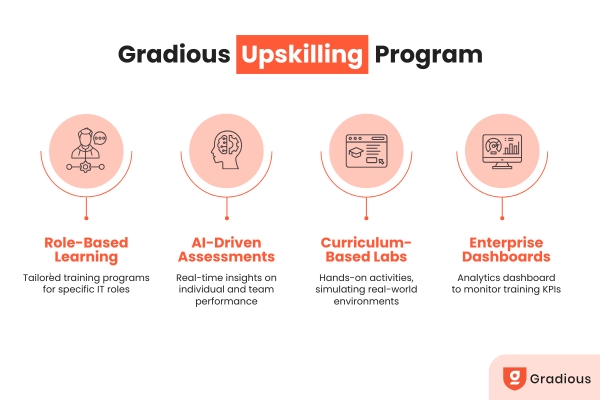
Here’s how:
- Role-Based Learning Paths: Tailored for DevOps Engineers, Cloud Architects, QA Automation Specialists, and Data Engineers — ensuring every module aligns with job responsibilities.
- AI-Driven Assessments: Real-time skill evaluation and readiness insights.
- Curriculum-Based Labs: Hands-on labs simulating real project environments.
- Enterprise Dashboards: Monitor KPIs such as completion rates, skill growth, and productivity impact.
By partnering with Gradious, IT companies can cut hiring costs by up to 70%, boost retention, and build future-ready teams that drive innovation.
Conclusion
In the end, upskilling isn’t just more cost-effective — it’s more sustainable. Hiring may fix short-term gaps, but it often leads to long-term inefficiencies. Upskilling builds internal strength, improves project quality, and delivers tangible ROI.
With Gradious Leap LMS, IT leaders can directly link learning to performance outcomes — tracking progress, automating feedback, and empowering employees to grow faster.
Start your workforce transformation journey with Gradious today — and turn learning into your competitive advantage.
📞 Talk to our team about building your internal upskilling program with Gradious Leap.”
FAQs
1: What is the difference between upskilling and hiring?
Upskilling enhances the skills of existing employees; hiring brings in external talent to fill gaps.
2: How does upskilling save money for IT companies?
It eliminates recruitment and onboarding expenses while improving retention and time-to-productivity.
3: Is upskilling suitable for startups and enterprises alike?
Yes. Startups gain multi-skilled teams at lower costs, while enterprises scale efficiently.
4: What’s the ROI of upskilling vs hiring for tech teams?
Hiring yields ~60% ROI in 12 months; upskilling achieves up to 120% ROI in six months.

